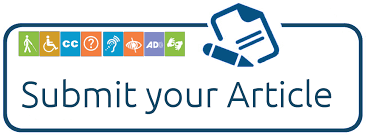A CONTRASTIVE ANALYSIS BETWEEN ENGLISH AND BATAK TOBA LANGUAGE IN VERBAL AFFIXES
Main Article Content
Desica Florensia Purba*
Fenni Malau
Mikhael L. A. Siahaan
Selviana Napitupulu
Indonesia is one of the largest countries in the world which consists of various islands and tribes. One of the tribes is the Batak Toba. Batak Toba is a native tribe originating from North Sumatra because most of the Batak Toba people live in North Sumatra. In this journal the author discusses a comparative between verbal affixes in English and Batak Toba Language. Which is English such as the source and Batak Toba Language as the target language. This article aims to determine the difference between verbal affixes in English and Batak Toba Language. The implement used is documentation and reading several other articles correlated to verbal affixes in English and Toba Batak Toba Language. Data were analyzed using descriptive analysis comparative studies. The research technique used is descriptive analysis to discovery the differences Verbal Affixes between English and Batak Toba Language. The findings reveal that the comparison of verbal affixes in English and Batak Toba Language in the recount text provided shows that the types of verbal affixes in English and Batak Toba Language are different. Verbal affixes in English and Batak Toba Language have differences, namely in English there are 3 types of affixes, namely, prefixes, suffixes, and infixes and these three types have more types in them. While in Toba Batak language there are 4 types of affixes, namely prefixes, suffixes, infixes, and confixes.
Ambarita, E. (2018). Adjectival Affixations in Toba Batak Language: A Descriptive Analysis of Adjectives.
Aslamiah, S. (2020). The Use Of Prefixes And Suffixes For Increasing Vocabulary Students. FIKRUNA, 2(2), 41–55.
Bauer, L. (2001). Morphological productivity (Vol. 95). Cambridge University Press.
Hutahaean, D. T. (2015). A Comparative Study of Verbal Affixes between English and Toba Batak Language. Journal of English Teaching as a Foreign Language, 1(1), 61–76.
Mitchell, A. M., & Brady, S. A. (2014). Assessing affix knowledge using both pseudoword and real-word measures. Topics in Language Disorders, 34(3), 210–227.
Nimehchisalem, V. (2018). Exploring research methods in language learning-teaching studies. Advances in Language and Literary Studies, 9(6), 27–33.
Nurhasiyanti, N., Indriyani, T., & Suryani, H. (2021). The Use Affixation On Students’writing At The Tenth Grade Of Senior High School 1 Jambi City. UIN Sulthan Thaha Syaifuddin Jambi.
Plag, I. (2018). Word-formation in English. Cambridge University Press.
Putra, M. D. S., Silvana, N., Wardani, A. K., & Pandin, M. G. R. (2022). LANGUAGE ETHICS IN DAILY LIFE.
Rabiah, S. (2018). Language as a tool for communication and cultural reality discloser.
Tenny, C. L. (1987). Grammaticalizing aspect and affectedness. Massachusetts Institute of Technology.
Verhaar, J. W. M. (2001). Asas-asas Linguistik. Yogyakarta: Gajah Mada University Press.
Xhina, O. (2013). Prefixation in English and Albanian languages. Academic Journal of Interdisciplinary Studies, 2(8), 253.
















